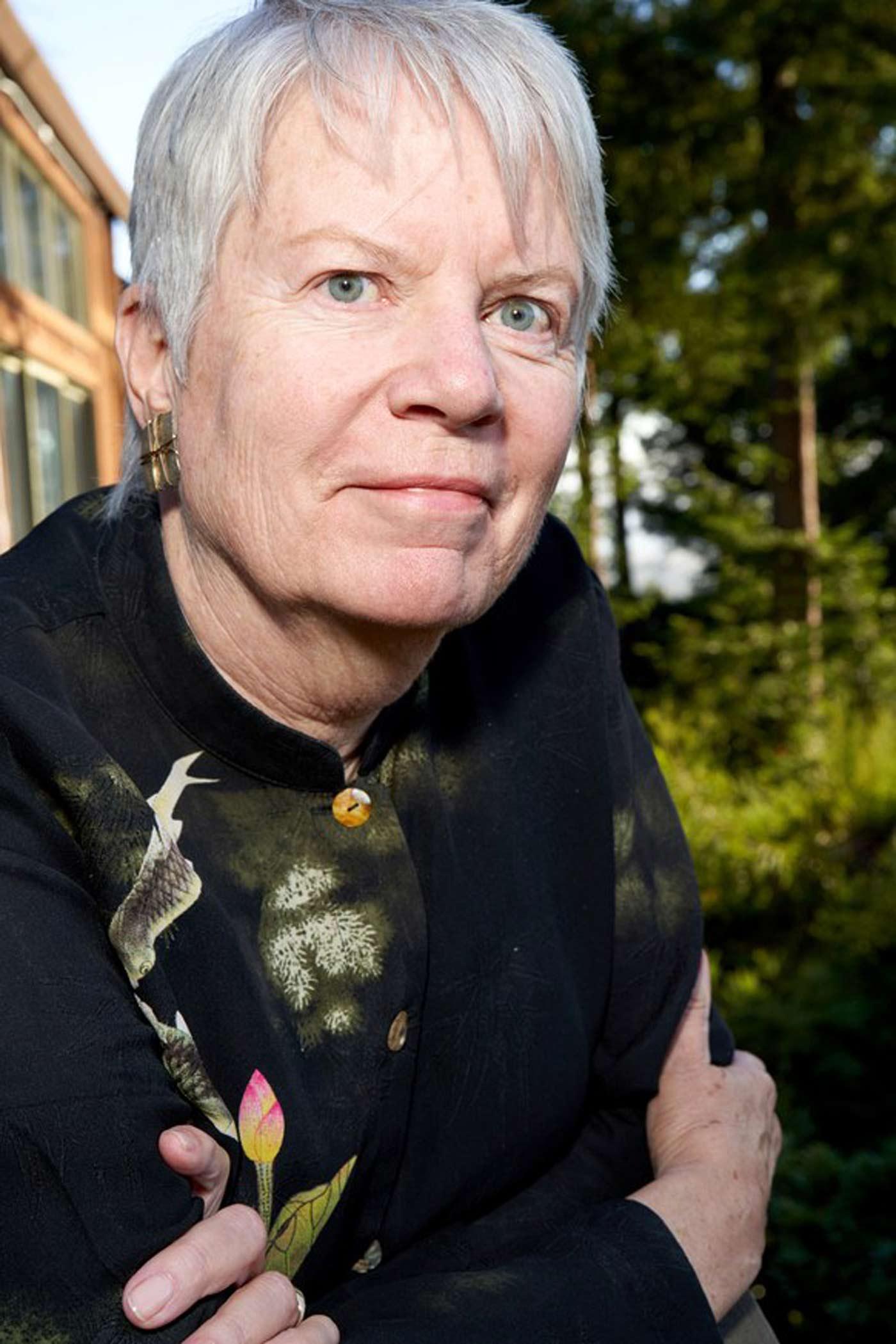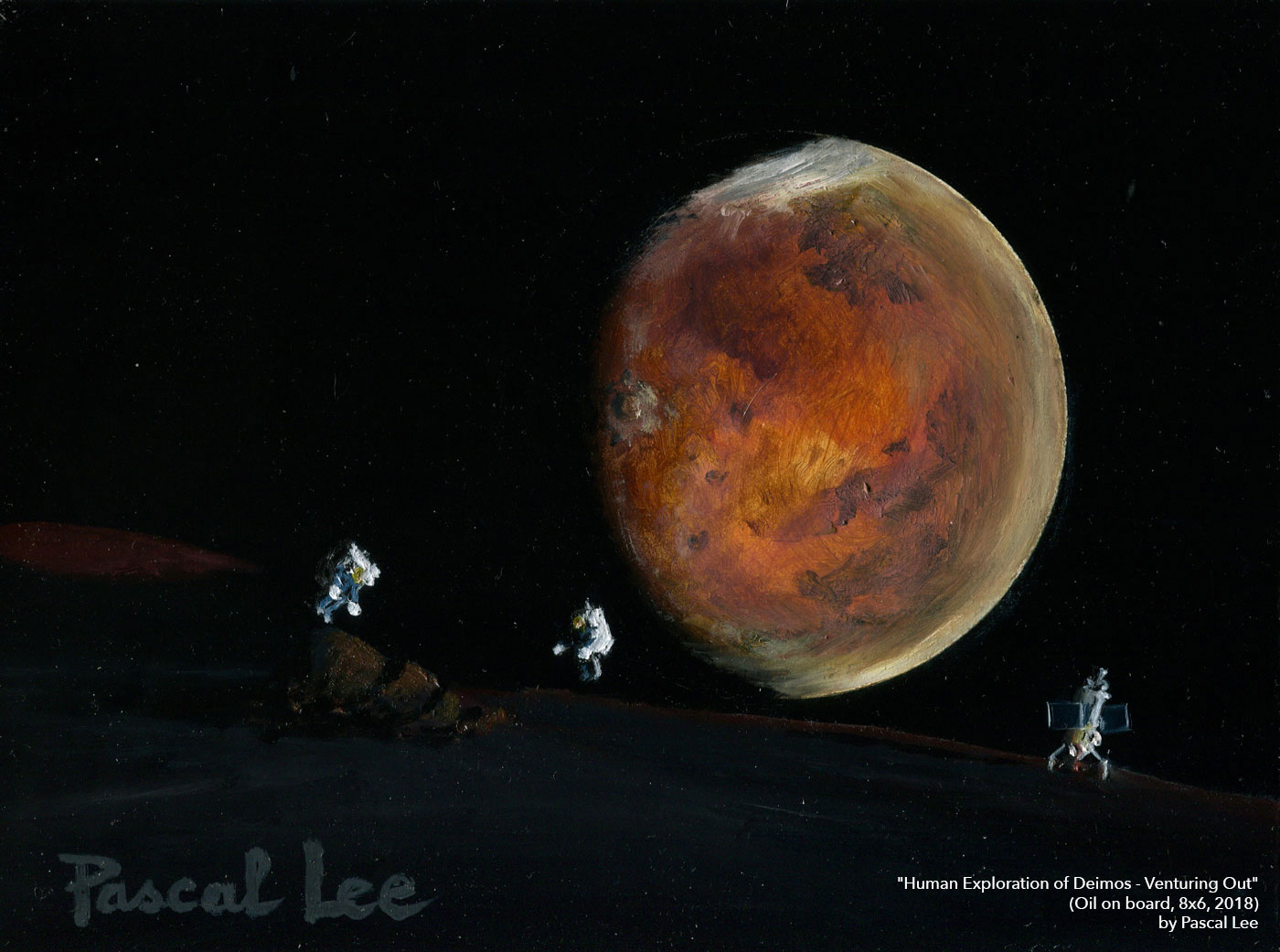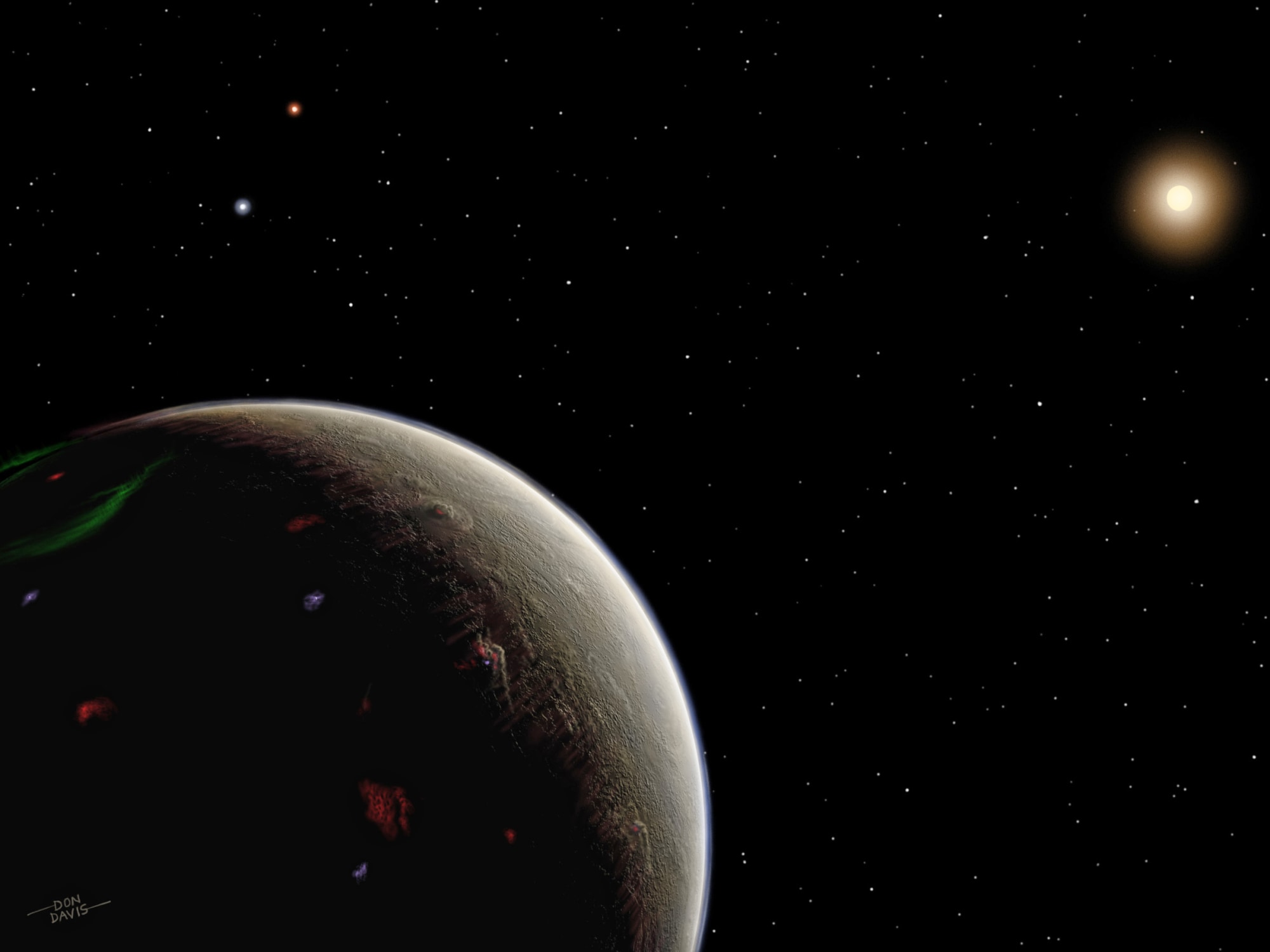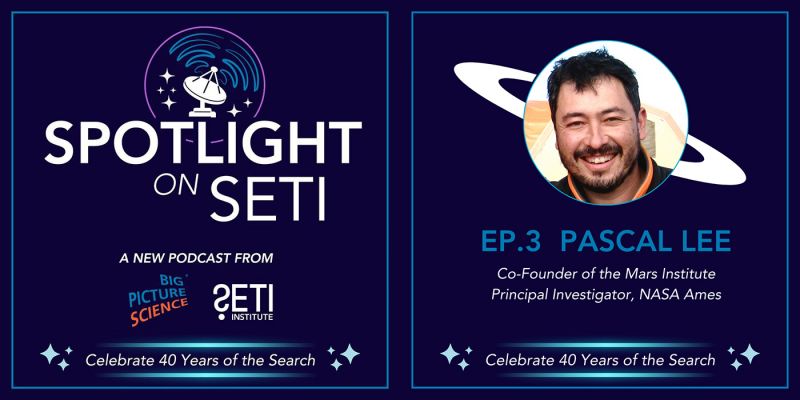
Jill Tarter, cofounder of the SETI Institute and Chair Emeritus for SETI Research, was named as one of Wired Magazine’s 25th anniversary Icons; she in turn was asked to nominate someone “who will shape the next 25 years”. Tarter nominated SETI Institute research scientist and NASA astrobiologist Margaret Turnbull for her work in identifying habitable planetary systems. The two first started working together more than twenty years ago, when Turnbull interned with Tarter - today, they combine their expertise to collaborate on projects related to the search for life in the universe. According to Wired, Tarter has thoughts about combining the same resources to search not just for habitable planets, but for alien technology:
Tarter wonders what advanced telescopes are actively looking for—beyond just distant celestial bodies. Surveys of the heavens, Tarter suggests, could be scanning for signs of sophisticated extraterrestrial civilizations... If Turnbull can work to connect her [NASA] colleagues to SETI, helping explore and communicate what their tools are capable of detecting, perhaps next-gen astronomers could pick up the existence of ETs.
The SETI Institute has cultivated a multidisciplinary approach to studying the origin and nature of life, and collaboration between researchers as exemplified by Tarter and Turnbull are building the paths future generations will tread in humanity’s journey of discovery.
- Wired: E.T. Hunters Join Forces to Probe the Heavens
- Wired: How We Captured (Almost) All of the WIRED25 Portraits
 Pascal Lee’s Art for Another World
Pascal Lee’s Art for Another WorldWhen SpaceX CEO Elon Musk revealed plans to send a small group of artists along with billionaire entrepreneur Yusaku Maezawa on a trip around the moon in the Big Falcon Rocket, many people began to nominate themselves for passage on the journey. GeekWire noted that among those quick to jump at the invitation was SETI Institute senior planetary scientist Pascal Lee, who posted on Twitter:
I humbly announce my candidacy to be a guest of Mr. Yusaku Maesawa @yousuck2020 on his amazing journey w/ Artists to the Moon. I am hoping it will not be held against an artist if he/she also serves as mission scientist...
Lee, in addition to his work on future human exploration of Mars, is a visual artist whose art focuses mainly on illustrations of Mars and space. On his personal website, he states: “My goal is to transport the viewer to another world, to make him/her a front row witness to a unique moment in space and time”.
- GeekWire: SpaceX’s round-the-moon trip could have VR, ‘Space Bar’ and in-flight entertainment
- PascalLee.net: Artwork
 The Strange Story of Sunspot Observatory
The Strange Story of Sunspot ObservatoryWas a conspiracy involving extraterrestrials responsible for the bizarre closure of a solar observatory in New Mexico? The secrecy surrounding the closure and evacuation of the Sunspot Solar Observatory and a nearby Post Office spurred a flurry of speculation about the possible cause – with many suspicious that the US government was covering up evidence of alien activity. Seth Shostak, senior astronomer for the SETI Institute, told Salon that despite the many questions provoked by the ordeal, he was unconvinced of E.T.’s involvement:
“The real thing is that you have the elements here that this is an observatory, it is looking at the sky and now some branch of the government that does have secrets is concerned about something there,” Shostak said. “Immediately people jump to this conclusion — the public always assumes when something is unexplained on Earth, aliens are to blame.”
“If this happened at a fast food restaurant, would they blame it on aliens?” he asked.
Shostak offered his own perspective on the sensation in a piece for NBC News MACH, elaborating on what fueled the frenzy of conspiracy theories surrounding the event:
A 2012 National Geographic poll found that nearly 80 percent of Americans think that the government is hiding information about the presence of aliens.
The Sac Peak story fed into these beliefs, and offered a perfect storm of shadowy circumstances.
While acknowledging the known history of covert actions in government, Shostak describes himself as “relentlessly skeptical” of the notion of cover-ups in the world of research:
I know from decades of experience that science is open: It operates by demanding confirmation and making results public. “Publish or perish” may be a cliché, but it is nonetheless true. If you, as a scientist, keep your work secret, you’ll soon be seeking another line of work… Aliens, to me, are highly unlikely to be part of the story.
- NBC News MACH: Why solar observatory's mysterious closure sparked talk of aliens
- Salon: The director of the Sunspot Observatory isn’t sure why the feds shut it down
 Fascinating: Astronomers Discover ‘Vulcan’
Fascinating: Astronomers Discover ‘Vulcan’Star Trek fans were delighted to learn that an exoplanet was discovered orbiting 40 Eridani A, which devoted Trekkers know is the location of Vulcan, homeworld of the character Spock and his pointy-eared people. The planet is located inside the habitable zone – meaning liquid water, a prerequisite for life as we know it, could exist there – and is about twice the size of Earth. Could there be real-life Vulcan’s on this newly-discovered world? NBC News MACH consulted the SETI Institute’s senior astronomer, Seth Shostak:
Seth Shostak, senior astronomer at the SETI Institute in Mountain View, California, said super-Earths "could very well be the sort of world where life could begin, and perhaps evolve into intelligent beings... But you’ve got to ask yourself — with all the twists and turns of evolutionary history on any planet, how likely is it that a planet 16 light-years away would eventually produce beings that look nearly identical to us, except for ears that would challenge any barber?"
While currently designated HD 26965b, Jian Ge, the University of Florida professor of astronomy who coauthored a recent paper on the discovery, hopes to persuade the International Astronomical Union to officially name the planet Vulcan. Logically.
- NBC News MACH: Astronomers just discovered Spock's home planet, Vulcan
 Seth Shostak Discusses ‘E.T. The Extra-Terrestrial’ on Unspooled
Seth Shostak Discusses ‘E.T. The Extra-Terrestrial’ on UnspooledUnspooled, the podcast that discusses and deconstructs iconic films, recently aired their episode on E.T. The Extra-Terrestrial. Seth Shostak, senior astronomer at the SETI Institute, joined the program to give Unspooled “the real-deal scoop” on humanity’s search for life beyond Earth, and how we might react in a real first-contact situation.
- Unspooled: E.T. The Extra Terrestrial
In last week’s episode, could DNA be used to store genetic treasures – or even alien messages? Find out what your DNA is hiding in DNA: Nature’s Hard Drive. On our previous week’s episode, enjoy an encore of Angles of a Hack, part two of BiPiSci’s look at the history and future of hacking.
Last week on Facebook Live, SETI Institute scientists Franck Marchis and Doug Caldwell discussed the great work of the Kepler space telescope, as the exoplanet-detecting craft nears the end of its life. On our previous episode of Facebook Live, Dava Newman, Nathalie Cabrol, and Jaya Bajpayee were interviewed by SETI Institute CEO Bill Diamond in their SETI Talk panel discussion on human exploration of Mars. Videos of all past Facebook Live events can be found on our Facebook page: https://www.facebook.com/SETIInstitute/
- XVIth Hvar Astrophysical Colloquium: September 24-28, Hvar, Croatia Meng Jin, SETI Institute Research Scientist will be one of the invited speakers; his presentation is "Sun-to-Earth Modeling of CMEs with a Global MHD Model: Facilitating Physical Understanding and Space"
- NASA Technosignatures Workshop: September 26-28, Houston, TX SETI Institute President & CEO Bill Diamond, Bernard M. Oliver Chair for SETI at the SETI Institute Andrew Siemion, Jill Tarter, and Eliot Gillum will participate
- Becoming Interplanetary: September 27, Washington, D.C. Nathalie Cabrol, Director of the Carl Sagan Center at the SETI Institute will be part of this event at the Library of Congress
- Institute of Geophysics and Planetary Physics: September 28, Santa Cruz, CA SETI Institute scientist JR Skok will give a talk about the search for life in the Martian Hot Springs
- The World Above the Tetons Science Speaker Series: September 29, Teton Village, WY Jill Tarter will present "Communicating Beyond Earth"
- International Astronautical Conference: October 1-5, Bremen, Germany John Rummel, Senior Scientist at the SETI Institute will be chairing a session
- Maria Mitchell Women in Science Symposium: October 5-6, Wellesley, MA Jill Tarter will be a keynote speaker
- Wired 25th Anniversary Festival: October 12-15, San Francisco, CA Jill Tarter, co-founder of the SETI Institute, will take part in the festival and present "The 21st Century: The Century of Biology on Earth and Beyond"
- Fermilab Arts and Lecture Series: October 12, Batavia, IL Jill Tarter, SETI pioneer and Chair Emeritus for SETI Research at the SETI Institute will present
- Science with HabEx: UV to Near-Infrared Space Astronomy in the 2030s: October 15-16, New York, NY SETI Institute Senior Scientist Franck Marchis will be an invited speaker
- SpaceTalks: October 20 Jasper, Alberta Canada Seth Shostak will participate in the panel discussion
- Division of Planetary Sciences Meeting: October 21-26, Knoxville, TN SETI Institute scientists are expected to participate
- Kepler, K2, TESS and Beyond: October 24, Bremerton, WA Jeff Coughlin, SETI Institute scientist and Director of the K2 Science Office, will giving a public talk at Olympic College in Bremerton, WA.
- The Undiscovered: October 26, Cambridge, MA Jill Tarter, Chair Emeritus for SETI Research at the SETI Institute will be a keynote speaker
- Toward an All-Sky Radio SETI Telescope: October 29-31, Manchester, UK Jill Tarter, Chair Emeritus for SETI Research at the SETI Institute is a member of the Scientific Organizing Committee





